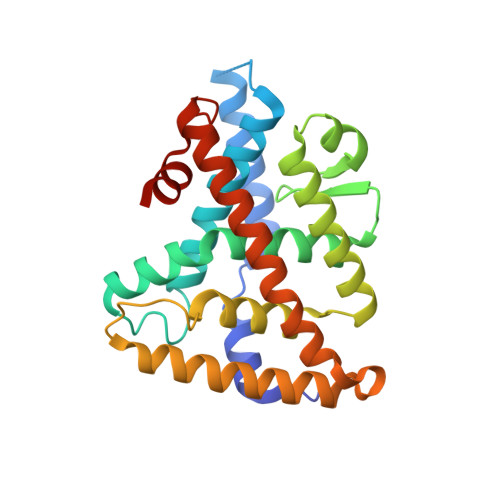Differential Modulation of Nuclear Receptor LRH-1 through Targeting Buried and Surface Regions of the Binding Pocket.
Cato, M.L., Cornelison, J.L., Spurlin, R.M., Courouble, V.V., Patel, A.B., Flynn, A.R., Johnson, A.M., Okafor, C.D., Frank, F., D'Agostino, E.H., Griffin, P.R., Jui, N.T., Ortlund, E.A.(2022) J Med Chem 65: 6888-6902
- PubMed: 35503419
- DOI: https://doi.org/10.1021/acs.jmedchem.2c00235
- Primary Citation of Related Structures:
7TT8 - PubMed Abstract:
Liver receptor homologue-1 (LRH-1) is a phospholipid-sensing nuclear receptor that has shown promise as a target for alleviating intestinal inflammation and metabolic dysregulation in the liver. LRH-1 contains a large ligand-binding pocket, but generating synthetic modulators has been challenging. We have had recent success generating potent and efficacious agonists through two distinct strategies. We targeted residues deep within the pocket to enhance compound binding and residues at the mouth of the pocket to mimic interactions made by phospholipids. Here, we unite these two designs into one molecule to synthesize the most potent LRH-1 agonist to date. Through a combination of global transcriptomic, biochemical, and structural studies, we show that selective modulation can be driven through contacting deep versus surface polar regions in the pocket. While deep pocket contacts convey high affinity, contacts with the pocket mouth dominate allostery and provide a phospholipid-like transcriptional response in cultured cells.
- Department of Biochemistry, Emory University School of Medicine, Atlanta, Georgia 30322, United States.
Organizational Affiliation:


















